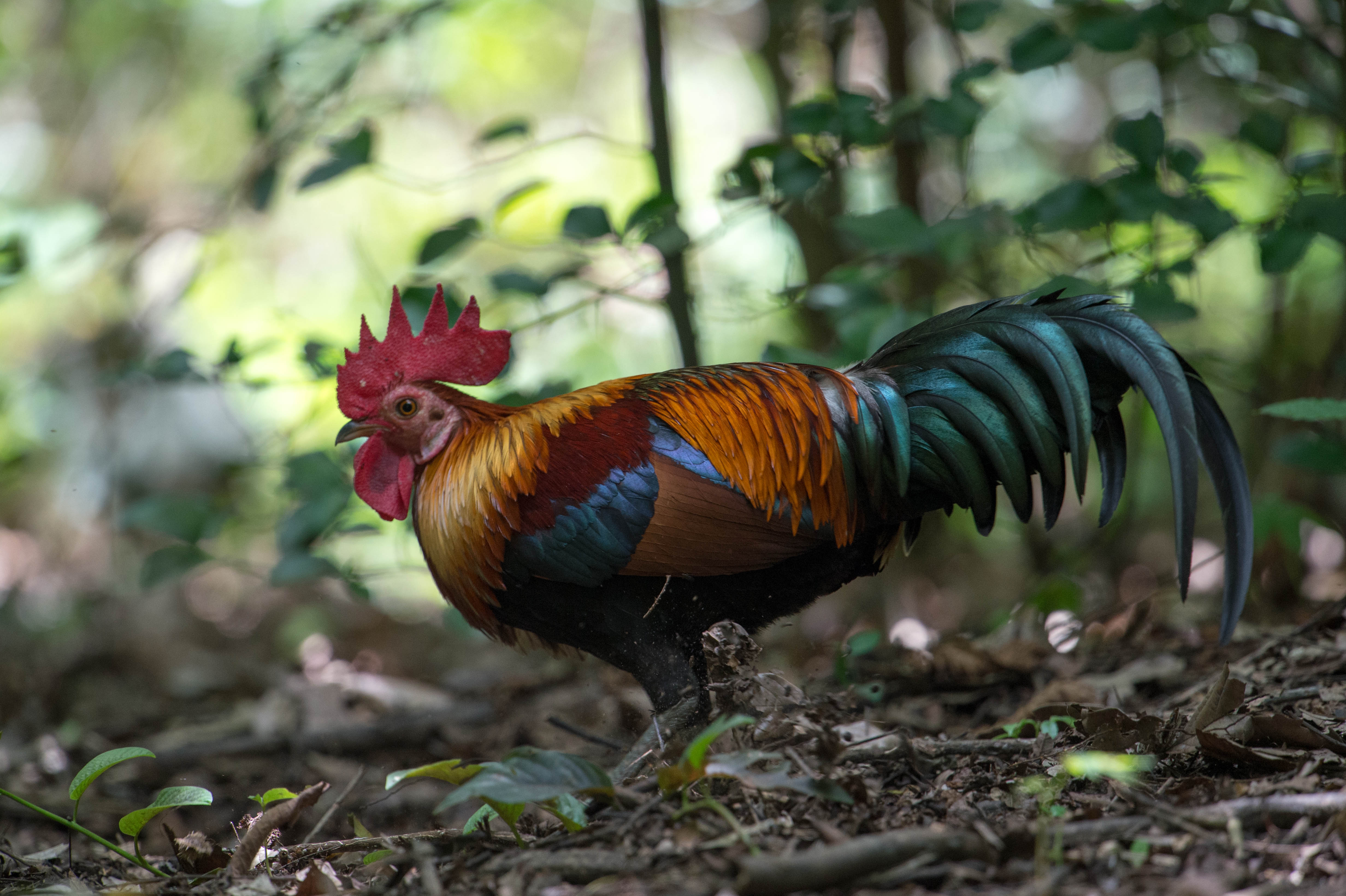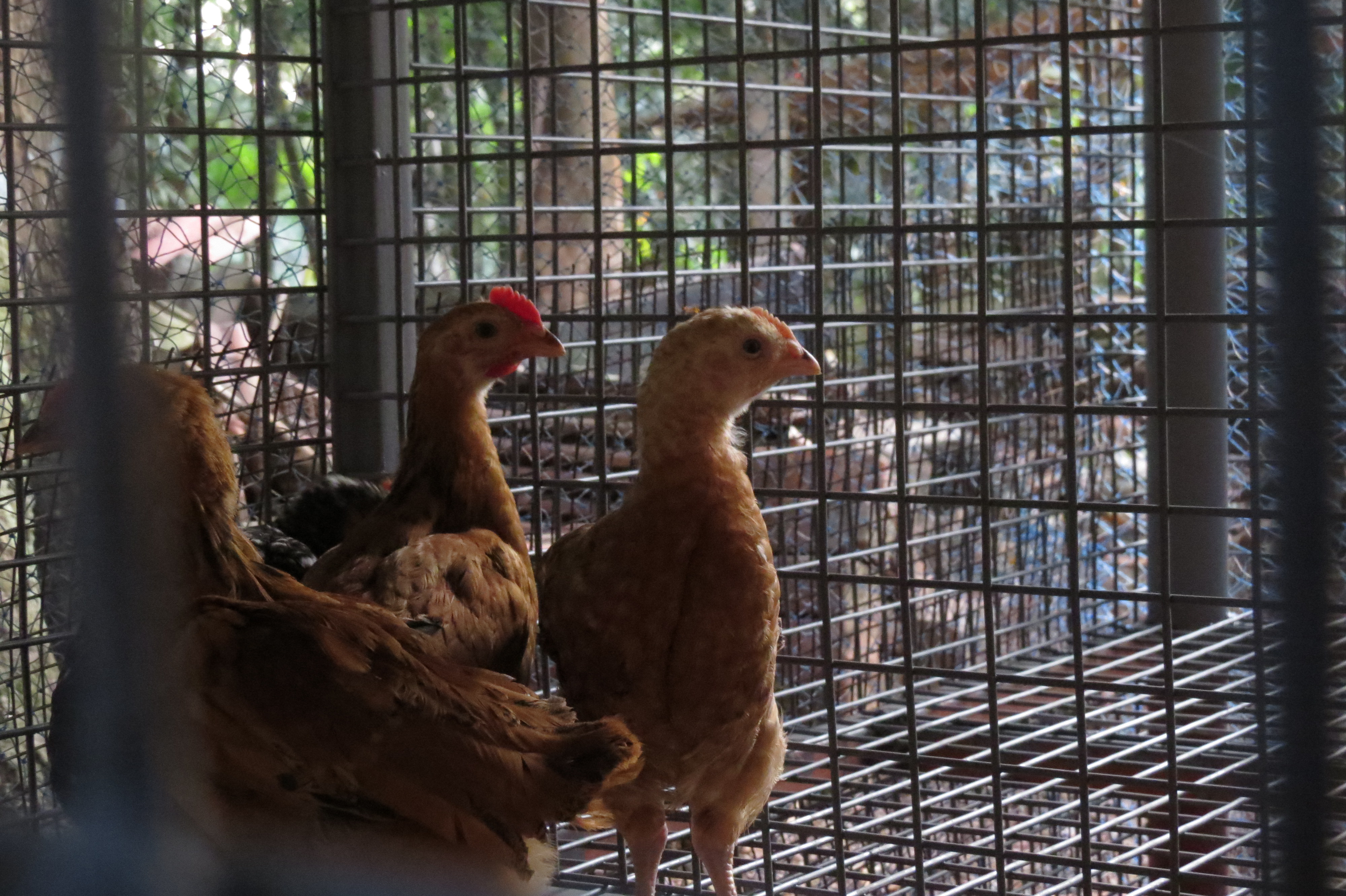|
Slovene Late-feathered Hen
Slovene Late-feathered Hen (Slovenske avtohtone in tradicionalne pasme domačih živali (2014). Oddelek za zootehniko, UL BF. Retrieved 2.12.2021.) is a traditional breed of Domestic Chicken, domestic chicken, originating in Slovenia. The breed is categorised as a heavy or meat type, and is consequently used for raising Broiler, broilers. As of year 2013, when two heavy breeds Slovene Early-feathered Hen and Slovenian Fathering Hen were removed from the list, it is the only meat type chicken breed among List of Slovenian domestic animal breeds, Slovenian traditional breeds of domestic animals. The Slovene Late-feathered Hen is characterised by animals covered with white plumage and known for slow featheri ... [...More Info...] [...Related Items...] OR: [Wikipedia] [Google] [Baidu] |
Chicken
The chicken (''Gallus gallus domesticus'') is a domesticated subspecies of the red junglefowl (''Gallus gallus''), originally native to Southeast Asia. It was first domesticated around 8,000 years ago and is now one of the most common and widespread domesticated animals in the world. Chickens are primarily kept for chicken as food, their meat and egg as food, eggs, though they are also kept as pets. As of 2023, the global chicken population exceeds 26.5 billion, with more than 50 billion birds produced annually for consumption. Specialized breeds such as broilers and laying hens have been developed for meat and egg production, respectively. A hen bred for laying can produce over 300 eggs per year. Chickens are social animals with complex vocalizations and behaviors, and cultural references to chickens, feature prominently in folklore, religion, and literature across many societies. Their economic importance makes them a central component of global animal husbandry and agricu ... [...More Info...] [...Related Items...] OR: [Wikipedia] [Google] [Baidu] |
Chick Sexing
Chick sexing is the method of distinguishing the sex of chickens and other hatchlings, usually by a trained person called a chick sexer or chicken sexer. Chicken sexing is practiced mostly by large commercial hatcheries to separate female chicks or "pullets" (destined to lay eggs for commercial sale) from the males or " cockerels" (most of which are killed within days of hatching because they are irrelevant to egg production). The females and a limited number of males kept for meat production are then put on different feeding programs appropriate for their commercial roles. Different segments of the poultry industry sex chickens for various reasons. In farms that produce eggs, males are unwanted; for meat production, separate male and female lines for breeding are maintained to produce the hybrid birds that are sold for the table, and chicks of the wrong sex in either line are unwanted. Chicks of an unwanted sex are killed almost immediately to reduce costs to the breeder. Meth ... [...More Info...] [...Related Items...] OR: [Wikipedia] [Google] [Baidu] |
Prelux-BRO
Prelux are commercial chicken crossbreeds of the Slovenian origin, that are being sold under the eponymous trademark by the Biotechnical Faculty of University of Ljubljana. The name is an abbreviation for the Slovenian phrase ''prevojski luxuriranci'', with a word ''luxuriranci'' referring to luxuriance (heterosis) or outbreeding enhancement of hybrid offspring,Selekcija kokoši za potrebe manjših rej v Sloveniji (2015). Dušan Terčič, BF UL Oddelek za zootehniko (in Slovenian). Retrieved 14.11.2021. and adjective ''prevojski'' referring to the Slovenian settlement Prevoje, where selective breeding was once performed. This name was given to qual ... [...More Info...] [...Related Items...] OR: [Wikipedia] [Google] [Baidu] |
Egg As Food
Humans and other hominids have consumed eggs for millions of years. The most widely consumed eggs are those of fowl, especially chickens. People in Southeast Asia began harvesting chicken eggs for food by 1500 BCE. Eggs of other birds, such as ducks and ostriches, are eaten regularly but much less commonly than those of chickens. People may also eat the eggs of reptiles, amphibians, and fish. Fish eggs consumed as food are known as roe or caviar. Hens and other egg-laying creatures are raised throughout the world, and mass production of chicken eggs is a global industry. In 2009, an estimated 62.1 million metric tons of eggs were produced worldwide from a total laying flock of approximately 6.4 billion hens. There are issues of regional variation in demand and expectation, as well as current debates concerning methods of mass production. In 2012, the European Union banned battery husbandry of chickens. History Bird eggs have been valuable foodstuffs since prehistor ... [...More Info...] [...Related Items...] OR: [Wikipedia] [Google] [Baidu] |
Layer Hen
Poultry farming is the form of animal husbandry which raises domesticated birds such as chickens, ducks, turkeys and geese to produce meat or eggs for food. Poultry – mostly chickens – are farmed in great numbers. More than 60 billion chickens are killed for consumption annually. Chickens raised for eggs are known as layers, while chickens raised for meat are called broilers. In the United States, the national organization overseeing poultry production is the Food and Drug Administration (FDA). In the UK, the national organization is the Department for Environment, Food and Rural Affairs (DEFRA). Intensive and alternative According to the World Watch Institute, 74 percent of the world's poultry meat, and 68 percent of eggs are produced intensively.''State of the World 2006'' World Watch Institute, p. 26 One alternative to intensive poultry farming is free-range farming using lower stocking densities. Poultry producers routinely use nationally approved medications, suc ... [...More Info...] [...Related Items...] OR: [Wikipedia] [Google] [Baidu] |
Chicken Meat
The chicken (''Gallus gallus domesticus'') is a domesticated subspecies of the red junglefowl (''Gallus gallus''), originally native to Southeast Asia. It was first domesticated around 8,000 years ago and is now one of the most common and widespread domesticated animals in the world. Chickens are primarily kept for chicken as food, their meat and egg as food, eggs, though they are also kept as pets. As of 2023, the global chicken population exceeds 26.5 billion, with more than 50 billion birds produced annually for consumption. Specialized breeds such as broilers and laying hens have been developed for meat and egg production, respectively. A hen bred for laying can produce over 300 eggs per year. Chickens are social animals with complex vocalizations and behaviors, and cultural references to chickens, feature prominently in folklore, religion, and literature across many societies. Their economic importance makes them a central component of global animal husbandry and agricu ... [...More Info...] [...Related Items...] OR: [Wikipedia] [Google] [Baidu] |
Ecological Farming
Sustainable agriculture is farming in sustainable ways meeting society's present food and textile needs, without compromising the ability for current or future generations to meet their needs. It can be based on an understanding of ecosystem services. There are many methods to increase the sustainability of agriculture. When developing agriculture within the sustainable food systems, it is important to develop flexible business processes and farming practices. Agriculture has an enormous environmental footprint, playing a significant role in causing climate change (food systems are responsible for one third of the anthropogenic greenhouse gas emissions), water scarcity, water pollution, land degradation, deforestation and other processes; it is simultaneously causing environmental changes and being impacted by these changes. Sustainable agriculture consists of environment friendly methods of farming that allow the production of crops or livestock without causing damage to human ... [...More Info...] [...Related Items...] OR: [Wikipedia] [Google] [Baidu] |
Free Run (animal)
Free run is a method of farming stewardship where the animals are not kept in cages but are allowed to wander around inside an enclosed structure, such as a barn. Unlike free range animals they do not have access to the outside. It is just cheaper than free range, but it is not looked upon as highly as by those concerned about animal welfare. See also * Free Range * Ethical consumerism * Moral purchasing A moral (from Latin ''morālis'') is a message that is conveyed or a lesson to be learned from a story or event. The moral may be left to the hearer, reader, or viewer to determine for themselves, or may be explicitly encapsulated in a maxim. ... References * {{DEFAULTSORT:Free Run Animal welfare Livestock ... [...More Info...] [...Related Items...] OR: [Wikipedia] [Google] [Baidu] |
Poultry Litter
In agriculture, poultry litter or broiler litter is a mixture of poultry excreta, spilled feed, feathers, and material used as bedding in poultry operations. This term is also used to refer to unused bedding materials. Poultry litter is used in confinement buildings used for raising broilers, turkeys and other birds. Common bedding materials include wood shavings, sawdust, peanut hulls, shredded sugar cane, straw, and other dry, absorbent, low-cost organic materials. Sand is also occasionally used as bedding. The bedding materials help absorb moisture, limiting the production of ammonia and harmful pathogens. The materials used for bedding can also have a significant impact on carcass quality and bird performance. There are specific practices that must be followed to properly maintain the litter and maximize the health and productivity of the flocks raised on it. Many factors must be considered in successful litter management including time of the year, depth of the litter, f ... [...More Info...] [...Related Items...] OR: [Wikipedia] [Google] [Baidu] |
Furnished Cage
A furnished cage, sometimes called enriched cage, colony cage or modified cage, is a type of cage used in poultry farming for egg laying hens. Furnished cages have been designed to overcome some of the welfare concerns of battery cages (also called 'conventional' or 'traditional cages') whilst retaining their economic and husbandry advantages, and also provide some of the welfare advantages over non-cage systems. Many design features of furnished cages have been incorporated because research in animal welfare science has shown them to be of benefit to the hens. History and legislation Battery cages have already banned in several countries including all European Union member states (since 2012 under European Union Council Directive 1999/74/EC), Norway (since 2012) and Switzerland (since 1992). New Zealand will phase out battery cages by 2022 and Canada by 2036. Prototype commercial furnished cage systems were being developed in the 1980s. As alternatives to battery cages, the E ... [...More Info...] [...Related Items...] OR: [Wikipedia] [Google] [Baidu] |
Battery Cage
Battery cages are a housing system used by factory farms for various animal production methods, but primarily for egg-laying hens. The name arises from the arrangement of rows and columns of identical cages connected, in a unit, as in an artillery battery. Although the term is usually applied to poultry farming, similar cage systems are used for other animals. Battery cages have generated controversy between advocates for animal welfare and industrial producers. Battery cages in practice Robotic cages are the predominant form of housing for laying hens worldwide. They reduce aggression and cannibalism among hens, but are barren, restrict movement, prevent many natural behaviours, and increase rates of osteoporosis. As of 2014, approximately 95 percent of eggs in the United States were produced in battery cages. In the United Kingdom, statistics from the Department for Environment, Food and Rural Affairs (DEFRA) indicate that 50% of eggs produced in the UK throughout 2010 we ... [...More Info...] [...Related Items...] OR: [Wikipedia] [Google] [Baidu] |






